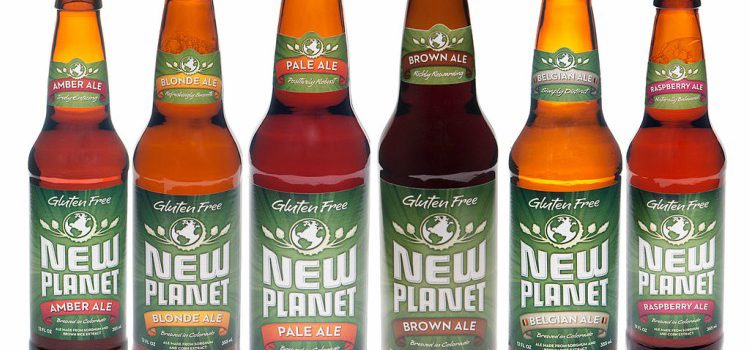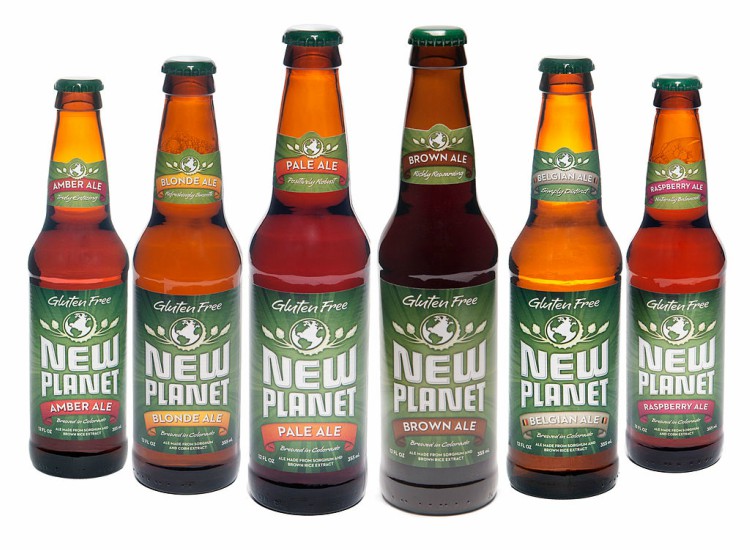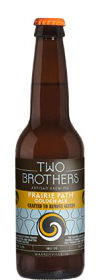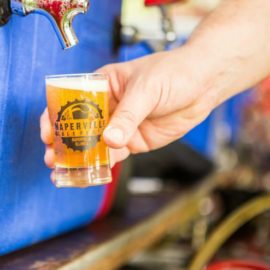

Gluten-free and gluten-reduced beers may be the new craft beer. According to one projection, this sector could see double-digit growth in the next five years—that is, the kind of growth craft had experienced up until a couple years ago.
This growth will be driven less, perhaps, by people with celiac disease than by people concerned with their weight or who may have gluten sensitivity or intolerance. These drinkers can get away with trace amounts of gluten such as may exist in gluten-reduced beers.
But breweries going the low/no gluten route should learn from the craft boom that sustainable growth will require conscious and strategic brand choices so that, once the market levels out, you have something to build upon more than novelty.
I’ve had my eye on these trends because my sister-in-law has celiac and because I have some gluten sensitivity, myself. I’ve made conscious choices to eliminate gluten in every area of my diet possible so that I only consume it via beer.
You have to pick your poison, I guess.
In even just a couple short years, I’ve already seen some interesting and significant movement in this industry, and in an effort to encourage those trends I’d like to see more of, here’s my list of the 3 best trends in low/no gluten beers, plus 1 pro branding tip I think will be key for this sector.
Better Flavor
My first experiences with gluten-free beers was not great. I don’t like to name beers I didn’t like on this site, so I won’t, but if you experimented in this area with the early GF beers a couple years ago, you probably know what I’m talking about. Even recently, however, I found a GF beer at Trader Joe’s that, while economical, just didn’t cut it for flavor.
The more recent entries, however, have been much better. To be fair, my favorites are gluten-reduced: New Belgium’s Glutiny beers and Two Brothers’ Prairie Path. These are brewed like regular beers, i.e., with barley, but an enzyme is introduced into the process that chops up the gluten proteins. Gluten intolerant people are often able to drink these beers with impunity, while those with celiac still react to the residual particles, so the low-gluten beers aren’t a total solution.
That said, Glutenberg and Lakefront Brewing have put out properly GF beers that have solid flavor and still feel very similar to drinking a barley-based beer.
Better Consumer Education
This is an interesting development, to me. The first few GF beers were sold primarily on being the only GF options around. Then the gluten-reduced beers came out, followed shortly by indications that they still made trouble for people with celiac. For a short time, there, it looked like the low/no gluten thing might be a short-lived experiment—and that celiac and sensitive people would just have to live without.
But brewers have worked hard to educate consumers about their beers. New Planet Brewing, which lays claim to being the nation’s only brewery dedicated to producing only low/no gluten beers, obviously has a vested interest in making sure people know the difference.
New Belgium explains how they chose to go the gluten-reduced route because they wanted that barely-beer flavor, and they add an FAQ page, just to go that extra mile.

Better Branding
Look at Two Brothers’ Prairie Path Golden Ale. It looks just like all their other beers. In fact, I’ve spoken with several people who drink it regularly and didn’t realize it was a gluten-reduced beer until I told them. It’s that good, and it doesn’t make a big fuss about being gluten-reduced.
New Belgium’s Glutiny could also pass for a regular beer. It’s got attractive packaging and a great taste. If it wasn’t called “Glutiny” you probably wouldn’t guess. Same goes for Glutenberg. Stone’s Delicious IPA, I’ve recently learned, is gluten-free. I’d never have guessed from just looking at it.
A Branding Tip
An important part of a marketer’s job is to try to think like a consumer. In this case, I really am a consumer, so my thoughts on this topic come, I suppose, “from the inside.”
I’d like to offer low/no gluten brewers a psychological insight that, to be honest, shouldn’t be too surprising: People don’t want to feel different for drinking a low/no gluten beer.
I like to grab a Prairie Path or a Glutiny and feel like a regular beer drinker. I like to grab a Lakefront New Grist and have to explain to folks that it’s completely gluten free.
To me, the future of low/no gluten beers is in branding them like regular beers with unique qualities. It’s not in foregrounding the fact that the beer is gluten free but in emphasizing that it’s a pale ale made with sorghum and millet, or an IPA that’s been gluten-reduced.
It’s also in educating consumers about how non-barley beers will taste or feel different. Just like we got used to veggie burgers when we got over the fact that they don’t taste like meat but could taste good as their own thing, consumers can get over non-barley beers if they’re allowed to appreciate them as different kinds of product.
I’m just one guy, so if you’ve got thoughts on the future of low/no gluten beers, let me know in the comments!
Images via Wikimedia & TwoBrothersBrewing.com.

